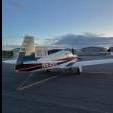Is a paint correction/ceramic coating worth it?
-
Members Online
- Guillaume
- pkellercfii
- M20S Driver
- Aerodon
- Dwb62
- Brian2034
- Max Clark
- exM20K
- DonMuncy
- air cooled dad
- Ron McBride
- eman1200
- ltdoyle
- Falcon Man
- redbaron1982
- TCC
- ChuckSchneider
- kasm
- AndreiC
- KSMooniac
- PT20J
- Jim Peace
- EricJ
- McMooney
- jhmoon
- 47U
- Patrick Horan
- DanM20C
- stlcg
- NickG
- larryb
- Old Chub
- GeeBee
- wombat
- Crawfish


Recommended Posts
Join the conversation
You can post now and register later. If you have an account, sign in now to post with your account.